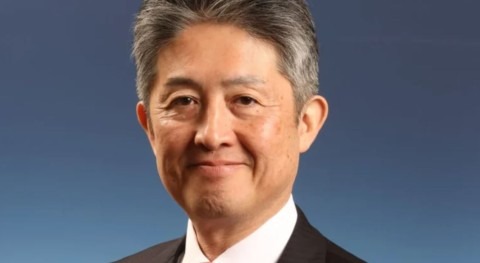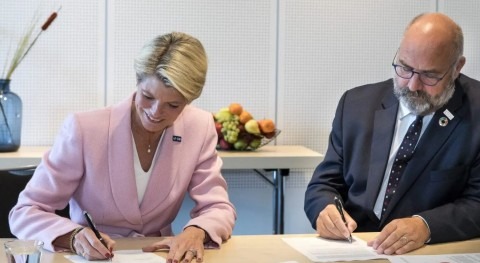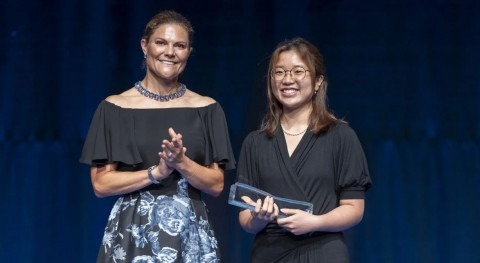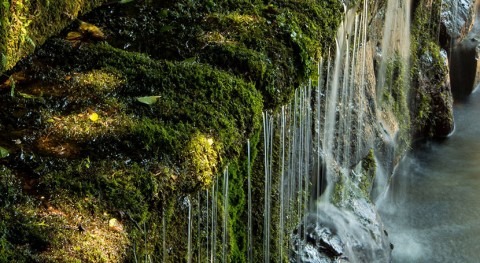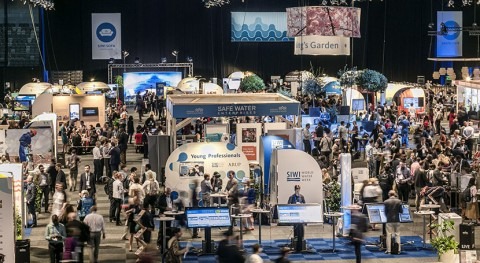This year, Dr John Cherry, a Distinguished Professor Emeritus from the University of Waterloo in Ontario, Canada, and a world-renowned expert on the threats to groundwater from contamination, was named the 2020 Stockholm Water Prize Laureate. A geological engineer by training, Dr Cherry has transformed the scientific paradigms of groundwater research through the creation of the academic field contaminant hydrogeology.
Numerous countries such as Brazil, Canada and the United States have implemented Dr Cherry’s approaches to groundwater monitoring. Presently working on various projects and research, providing groundwater knowledge to students and water professionals around the world is particularly important to him. This is why he and other leading groundwater scientists are launching the Groundwater Project in August 2020, making their texts available free of charge for anyone to use.
We have had the pleasure to speak with him on what it means for him to receive the Stockholm Water Prize, and what can be done to make groundwater, a fundamental source of drinking water, that is too often out-of-sight and out of mind, a priority.
Question: What does it mean for you to receive the Stockholm Water Prize?
Answer: I am very pleased to receive this prize because it draws attention to groundwater and provides me with higher profile opportunities to talk about the state of the groundwater environment and current projects that I believe are important concerning the water global environment. Groundwater makes up 99 percent of all liquid freshwater and provides nearly 50 percent of the global population with drinking water while contributing to about half of global food production. Groundwater seepage makes up about half of all river flow and sustains our wetlands. Groundwater is important in many countries, but it is out-of-sight and generally out of mind. I am the second groundwater scientist and the second Canadian to receive this Prize; the first Canadian in years. Over these 30 years in Canada, federal and provincial governments have allowed water monitoring, management and overall water care to decline to shameful levels on international standards. I hope that I can use the credibility that comes with this prize to draw attention in Canada to this situation. I am a groundwater contamination expert and I have built my career on doing collaborative field-focused research at contaminated sites. This type of research is expensive, and, over the past 50 years, I have been well supported by government and industry to do this research. We know a lot about groundwater contamination and how to monitor it, but in general across the globe little of this knowledge is being put to adequate use to serve societal needs in the assessment and protection of groundwater resources. This Prize will help to draw attention to this knowledge and experience.
It is my responsibility to draw attention in whatever ways I can to the dismal state of groundwater protection and management
Q: As recipient of the Stockholm Water Prize, how do you think this will shed a light on groundwater protection and management?
A: As recipient of this Prize I feel that it is my responsibility to draw attention in whatever ways I can to the dismal state of groundwater protection and management in nearly all countries. Groundwater contamination is widely ignored for various reasons, perhaps the most important being that we do not see or sense the state of the groundwater environment and the degradation of groundwater quality is a slow process; connections between cause and effects are not readily apparent because we monitor so sparsely. As a society we can see the effects of air pollution and climate, but rarely can we sense that the quality of the groundwater environment is on a long-term decline. There is fresh groundwater beneath us everywhere. The top of the groundwater zone is just a few meters or tens of meters below the land surface nearly everywhere that people live. We pay so little attention to it. This groundwater is flowing slowly from one area to some other area and this flow is important in many ways. With the attention from this Prize, it is my responsibility to draw attention to groundwater and to make the groundwater story interesting and the importance of groundwater evident. This is not easy, but I have excellent colleagues across the globe helping me with this.

Q: You recently said: “Though the global water crisis is starting to get more attention, groundwater is often forgotten, despite it making up 99% of the planet’s liquid freshwater.” What do you think can be done to make it more visible?
A: To make groundwater more visible, we need to get people to ask more questions about water and groundwater in particular. For example, when we drink water, we should ponder: what is in the water or what is the chemical composition of the water; why does the water taste as it does; when we turn on the tap, where does the water come from; when we flush the toilet, where does the water go and where does it end up? When we eat a meal, how was water essential to the production of the food? Given that the human body is made up of 99.9 percent water molecules based on percent molecules (75 percent by weight) and that groundwater makes up 99 percent of all liquid freshwater, we should know more about how we humans connect to water in general and groundwater in particular. We need more curiosity about water in the educational system. In the simplest sense, water is just H2O but in fact water is a wonderful and marvelous substance that we trivialize by the H2O notation. We need ponder much more than this basic chemical formula. So, given these basic water questions that have so much to do with human evolution, survival and enjoyment of living on our Planet, it needs to become more evident that seeking of answers to these questions is part of being a conscious global citizen. There needs to be democratization of water knowledge with groundwater included as a key component of the freshwater cycle. The problem starts at university level education where water knowledge is fragmented into siloes that impede the overall understanding and focus on what is important. Universities have become more part of the problem rather than part of the solution.
To make groundwater more visible, we need to get people to ask more questions about water and groundwater in particular
Q: What are the most threatening contaminants currently found in groundwater resources?
A: In the 1950’s, chromium, petroleum products and detergents were found in groundwater. They did little harm because they are readily “assimilated” by retention in the geologic media or biodegradation in the vast groundwater reservoir. Assumed assimilative capacity was the basis for septic systems to become ubiquitous in the countryside. The first inkling that not all groundwater contaminants are readily assimilated came from promulgation of the US 1974 safe drinking water regulations, which resulted in chlorinated solvents being found in thousands of public water supply wells across the United States. More regulations in the United States in 1980 and later elsewhere mandated investigations of contaminated industrial sites, which revealed widespread chlorinated solvents (e.g. PCE, TCE, TCA and daughter products). This showed that some toxic chemicals are not readily degraded and travel long distances in some aquifers. More types of mobile and persistent industrial chemicals have been discovered since the 1990’s in water supply wells, including 1,4 dioxane, pesticides, perchlorate and pharmaceuticals. The most recent discovery is per- and polyfluoroalkyl substances known as PFAS comprising thousands of compounds. PFAS may be the worst of all because they resist gradation, they have large toxicological and analytical challenges and the drinking water standards are set externally low (picograms/L). Each new contaminant type found in groundwater has appeared as a surprise, shameful testimony to society’s lack of foresight.
The one chemical that has not been a surprise is widespread nitrate and phosphorus from agriculture. Much of the nitrogen and phosphorus applied to crops is flushed into groundwater. Nitrate is mobile and migrates in groundwater to impact the ecosystems of rivers, lakes and estuaries. Phosphorus travels more slowly so the impacts are delayed but inevitable. Because there are now many types of contaminants that are mobile and degrade slowly or minimally and because chemical residence times in groundwater are decades to centuries, groundwater contamination should be viewed as cumulative rather than just passing through. Polluted groundwater rarely has a bad taste or smell, which gives an unfounded but intuitive confidence in groundwater ‘purity’, however water wells showing no anthropogenic chemicals are rare. People commonly ask whether or not the water provided by wells is safe to drink. The answer to this question used to be based on a few routine and simple tests, but now in many areas to answer the question based on what science has to offer requires a diverse array of sophisticated tests to determine the chemical concentrations to the micrograms per litre level or below because people increasingly want to know what is in the water they drink. Many do not believe their public drinking water is safe and so resort to bottled water for which requirements for analyses are less than for public drinking water.
There needs to be democratization of water knowledge with groundwater included as a key component of the freshwater cycle
Q: The G360 Institute for Groundwater research has developed many independent technology patents. What work is the G360 currently working on?
A: The G360 Institute, where I am a senior advisor and participant in a few projects, is one of the most active academic units in the world focused on field studies of groundwater contamination. This team led by Dr. Beth Parker has many different projects, amongst them is continual development and testing of new ways to acquire information from groundwater systems relevant to many hydrogeologic environments around the globe with projects in Canada, USA, Sweden, China, Brazil, and beyond. G360 is a very collaborative organization. For example, G360 has a nearly two-decade long collaboration with the City of Guelph (population 130,000) near Toronto to design and install a high-resolution 3D groundwater monitoring network using the most advanced technologies to track groundwater levels and water chemistry over time. In conventional groundwater monitoring networks, each borehole has only one or two monitor wells installed but modern technologies allow each hole to have data acquisition form many different depth intervals in each hole, with ports placed to avoid cross-connection, so that the groundwater system is observed in its full three dimensional complexity. Guelph gets nearly all its water supply from the bedrock aquifer beneath the city and now serves as an example of world class urban groundwater monitoring. As better methods are developed, they are applied here immediately to assess their effectiveness and to provide ‘ground truthing’ of a sophisticated computer model to represent the interconnected groundwater and surface water system. Another project example involves development of methods to create small diameter, safe water supply wells at locations where access by conventional water well drilling machines is not possible. This project makes use of small portable drills used in the mineral exploration industry to drill just about anywhere at relatively low cost. The aim is to demonstrate innovative ways to make safe, low-cost wells in developing countries and in remote aboriginal communities. More than a billion poor people around the globe need safe drinking water wells, which is a problem that is not being solved using the conventional ways to making water wells.

Q: Could you tell us a bit more about the Groundwater Project?
A: Depletion of the quantity of global groundwater and degradation of its quality has been occurring silently over decades with minimal societal awareness of the unfolding crisis. This results from a generally poor understanding of the specialized physics and chemistry and commonly ineffective governance structures established long ago without knowledge of groundwater science. Typically, this results in inadequate or nonexistent groundwater monitoring and modeling of what is going to happen with ballooning population and expanding industrialization. The first step towards reversing the trends must be education about all aspects of groundwater to serve the full spectrum of stakeholders. To date, groundwater science has not served humanity to its full potential in part because we have not spoken well to a broad multidisciplinary readership (e.g., water supply for society and ecosystems, mining, agriculture, industry, management). In an attempt to overcome these shortcomings many colleagues across the globe and I have initiated the Groundwater Project that incorporates the voluntary expertise of scientists and engineers from 24 countries on 6 continents who are preparing hundreds of educational “book type” chapters for free online distribution wherever there is the internet. Our goal is to explain ‘nearly all things groundwater,’ at introductory, university and advanced levels of treatment relevant to both developed and developing countries. Our website (gw-project.org) began operations on March 23, a day after World Water Day, 2020 and the first set of mini-books will be published on the web site in August with hundreds more to appear there over the next few years. We have plans for rapid crowd-sourced translations to follow each of the initial publications in English. The spirit of volunteerism across the globe that supports this effort is much beyond what I had thought possible. I am leading this effort to get it off the ground, but it is truly a collaborative global project and I am being swept along in its the current.
The problem starts at university where water knowledge is fragmented into siloes that impede the overall understanding on what is important
Q: You have often urged governments to devote more of their budget to groundwater monitoring. With rapid population growth and increasing impacts of climate change, what do you think can be done to encourage worldwide governments to devote more of their budget to groundwater monitoring?
The United Nations recognized safe drinking water as a human right in 2010, yet access to this right is diminishing. Bold initiatives by government are needed such as: water taxes to fund transparent monitoring and research to understand the full nature and scope of contamination; agricultural policies to level the playing field for chemical versus ecological agriculture; laws that require all drinking water sources to have routine precautionary chemical and pathogen analyses; laws for all new chemicals and products to have full-cycle assessments of toxicology and fate in groundwater; incentives for the pursuit of ‘cradle to cradle’ manufacturing; and democratization of groundwater education for all stakeholders. But to prompt such initiatives there needs to be awareness of the known magnitudes of the problems and the projections and uncertainties surrounding the issue. I hope that we can use The Groundwater Project to make government and water management circles more aware of the problems and the implications of climate change and population and industrialization expansion. Specifically, it is my intention that in The Groundwater Project, we seek out the best examples from around the world concerning groundwater monitoring, management, protection and governance. There are examples worth emulating in many countries around the globe, however the problem is that they are buried in the technical literature or hidden from view in the bureaucracies. These examples where governance is modern and responsible are critical to understanding what needs to change and why criticism is warranted in some areas. Irresponsibility concerning groundwater is common across the globe but there are bright spots where credit needs to be given. The Groundwater Project is about democratization of knowledge and is aimed at groundwater education. This includes identification of what is happening around the globe that is positive and worthy of attention with the goal of moving groundwater towards a sustainable resource.





